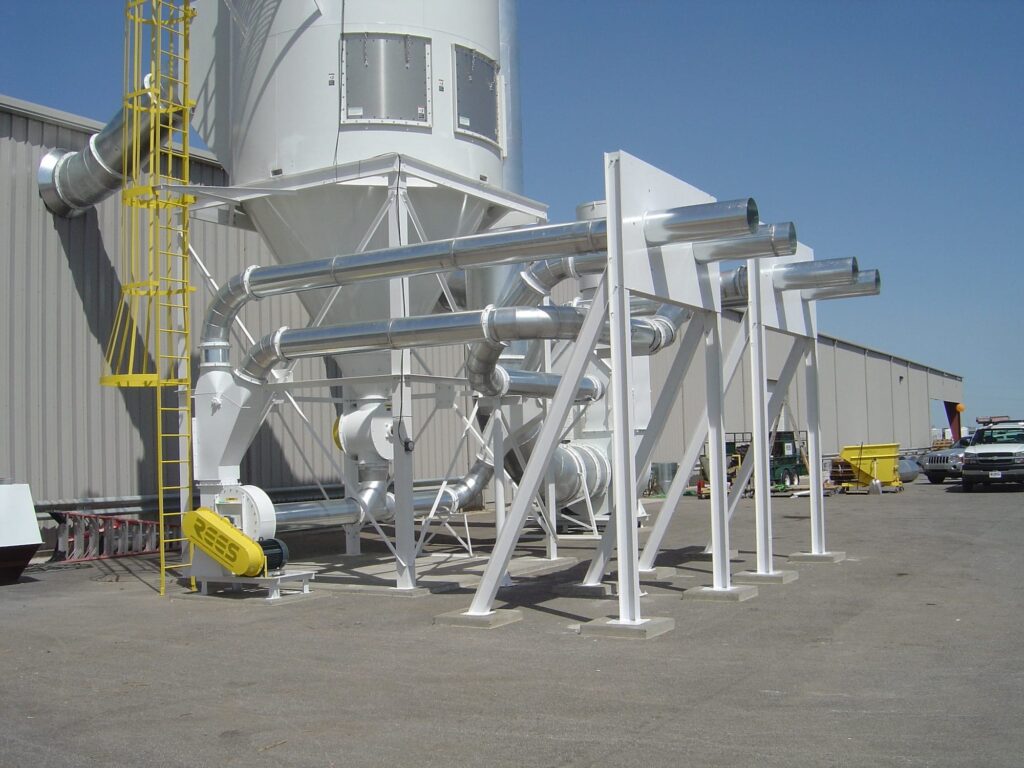In the heart of industrial operations, an efficient and clean working environment plays a pivotal role in ensuring optimized production, safety, and compliance with environmental regulations.
A strong waste transfer system is necessary for managing and disposing of industrial waste efficiently. This system helps in reducing dust and dangerous materials. This guide provides an insightful pathway to selecting the ideal waste transfer system tailored to meet your industry’s demands, spotlighting the different types available including low-pressure transfer systems, high-pressure transfer systems, screw conveyors, and trailer blow-in systems.
Comprehend Your Waste Profile:
The cornerstone to selecting a suitable waste transfer system is having a clear understanding of the waste your facility generates. This includes the volume, type, and hazardous nature of the waste. A precise waste profile guides you in pinpointing a system tailored to handle your particular waste management needs.
Regulatory Compliance:

Ensuring compliance with local, state, and federal regulations concerning waste disposal is imperative. The waste transfer system you select should adhere to all essential legal and environmental guidelines, fostering a safe working environment and shielding your enterprise from potential legal hurdles.
Efficiency and Performance Evaluation:
The heart of a quality waste transfer system is its efficiency. Seek systems offering superior performance, low maintenance, and high durability, capable of handling your facility’s waste load while ensuring smooth operations over an extended timeframe.
Technological Advancements:
Modern waste transfer systems are adorned with advanced technological features enhancing functionality and ease of use. Automated controls, self-monitoring for alerts, and integration with other systems improve waste management.
Types of Waste Transfer Systems:
- Low-Pressure Transfer System: Ideal for transferring light materials, these systems are cost-effective and offer a simplistic design for ease of maintenance and operation.
- High-Pressure Transfer System: Designed for handling dense materials, these systems are robust, providing efficient and quick waste transfer solutions.
- Screw Conveyors: Perfect for handling dry and semi-dry waste, screw conveyors offer a compact design, facilitating the efficient transfer of waste materials.
- Trailer Blow-In System: These are mobile systems ideal for transferring waste into trailers for easy disposal, offering a flexible solution for waste management.
Customization Opportunities:
Every industrial setting has unique needs. Opt for a waste transfer system that offers customization to meet your specific requirements in terms of size, capacity, or the type of waste it can handle, providing more value and efficiency.
Cost Assessment:
Conduct a thorough cost assessment encompassing installation, operation, and maintenance. While an efficient waste transfer system requires a substantial upfront investment, it should deliver value and not drain your resources in the long run.
Professional Consultation:
Engage with seasoned professionals in waste management solutions for insightful recommendations based on your industrial setup. Their expertise will guide you in making an informed decision.
Vendor Reputation and Reviews:
The reputation of the vendor manufacturing or selling the waste transfer system is crucial. Look for vendors known for quality, reliability, and exceptional customer service. Reviews and site visits where our systems are in operation can provide a clearer picture of what to expect.
In conclusion, a well-chosen waste transfer system is a linchpin in ensuring a clean, safe, and efficient industrial environment. It not only abides by the environmental norms but also significantly ramps up operational efficiency. By using this guide and learning about waste transfer systems, you can make a smart choice for your industrial setup. This will help you manage waste in a sustainable and excellent way.

